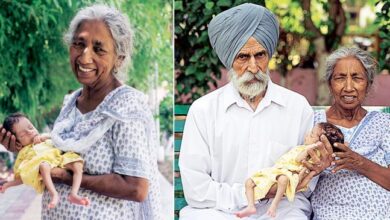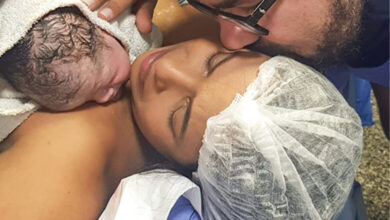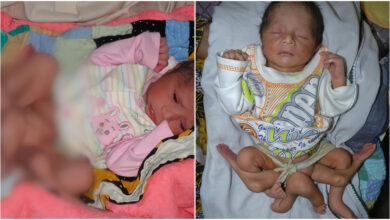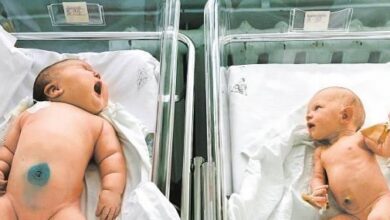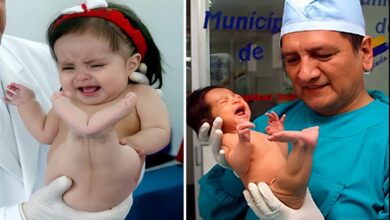32-year-old nurse gives birth to ‘one-of-a-million’ twins, one with Down’s Syndrome
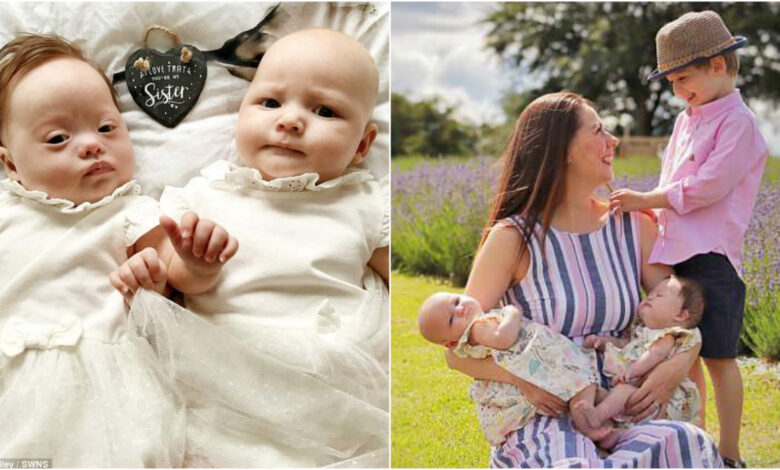
A mother has shared her pride after welcoming one in a million twin girls, one of whom has Down’s Syndrome and the other who doesn’t.
Nicola and Todd Bailey, from Sheffield, only learned that their daughter Harper had the genetic condition when she was born, 38 minutes before her twin sister Quinn.
The couple say the doctors apologized when they broke the news, but they insist there is nothing to apologize for with this disease.
They insist that both their daughters are perfect and that they wouldn’t change either of them “for anything in the world”.
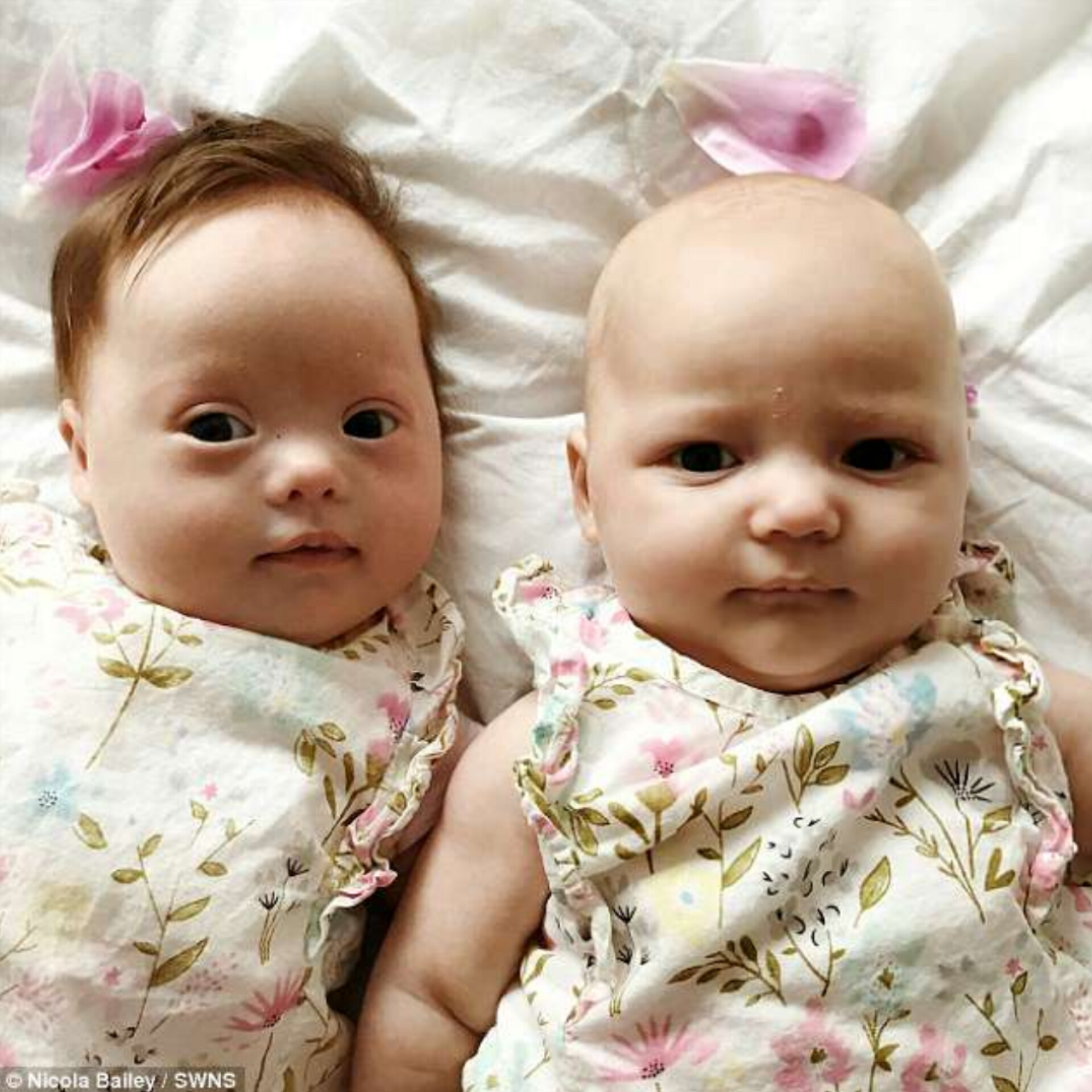
Nicola, a nurse, is now working to educate people about this genetic disease and reduce prejudice.
The 32-year-old said: “Harper is Harper and Quinn is Quinn – they’re not the same and I try not to compare them, even though it’s hard.
I don’t see Harper as different from my other children and I wouldn’t change her for the world.
Sometimes people stare at her and that’s sometimes difficult because the perception of Down’s Syndrome can be very negative.
We get comments like “Oh, it’s a Down’s syndrome baby” or “I know a girl with Down’s syndrome”. It’s not a Down’s baby, it’s a baby with Down’s syndrome.
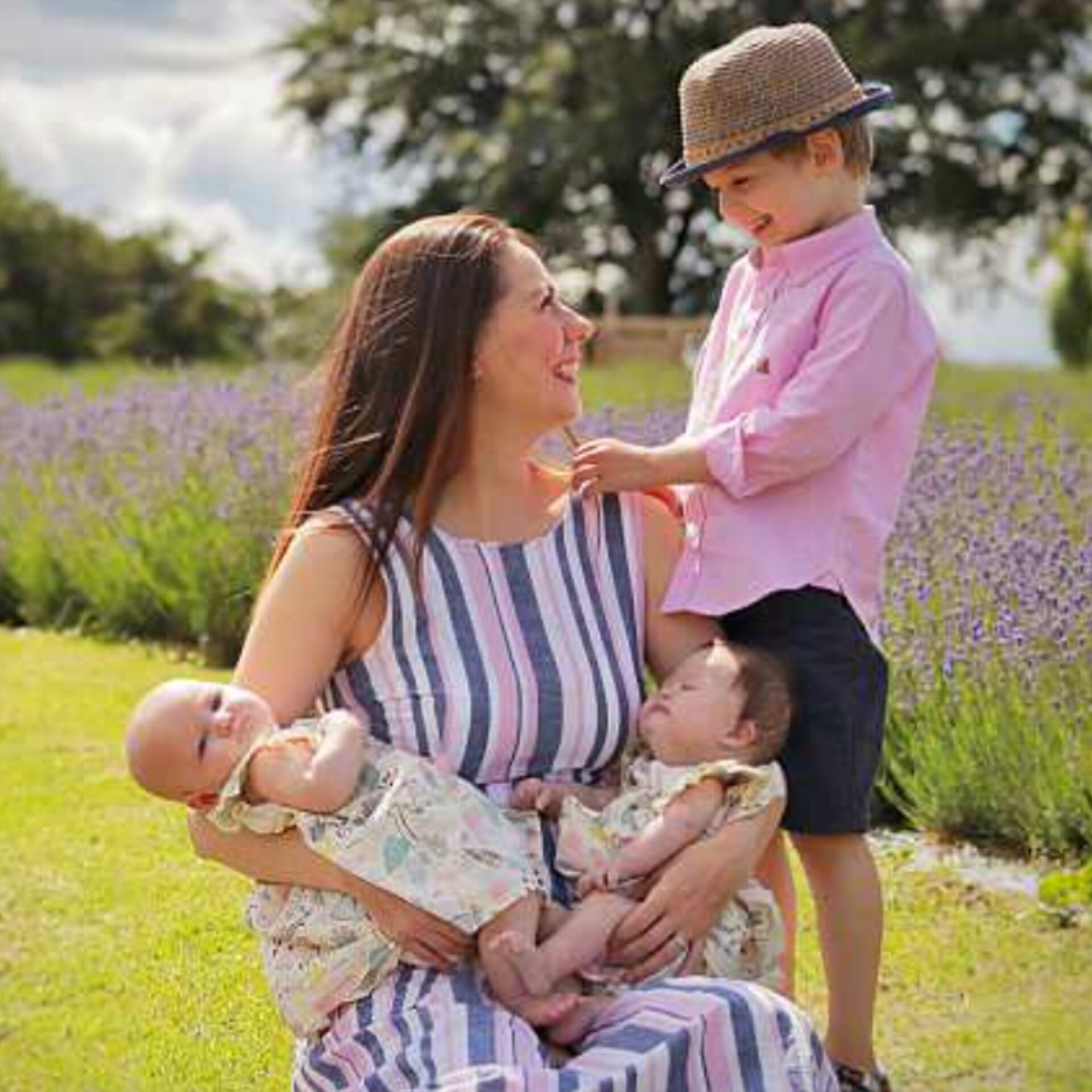
They always break the news by saying, “I’m sorry. I’m not sorry. Harper is perfect, I wouldn’t change her, her little smile lights up the room and she’s what she’s supposed to be.
Nicola and Todd, Account Manager at Auto Trader, also have a son, Lucas, aged four, and were delighted to learn that they were expecting again.
The sonographers announced twins at the 12th-week scan, then two girls, but the tests revealed no abnormalities.
I had a strange feeling because I put on weight much faster than in my previous pregnancy and I was very sick,” Nicola added.
We looked at the screen, then at each other, speechless. My husband turned as white as a ghost.
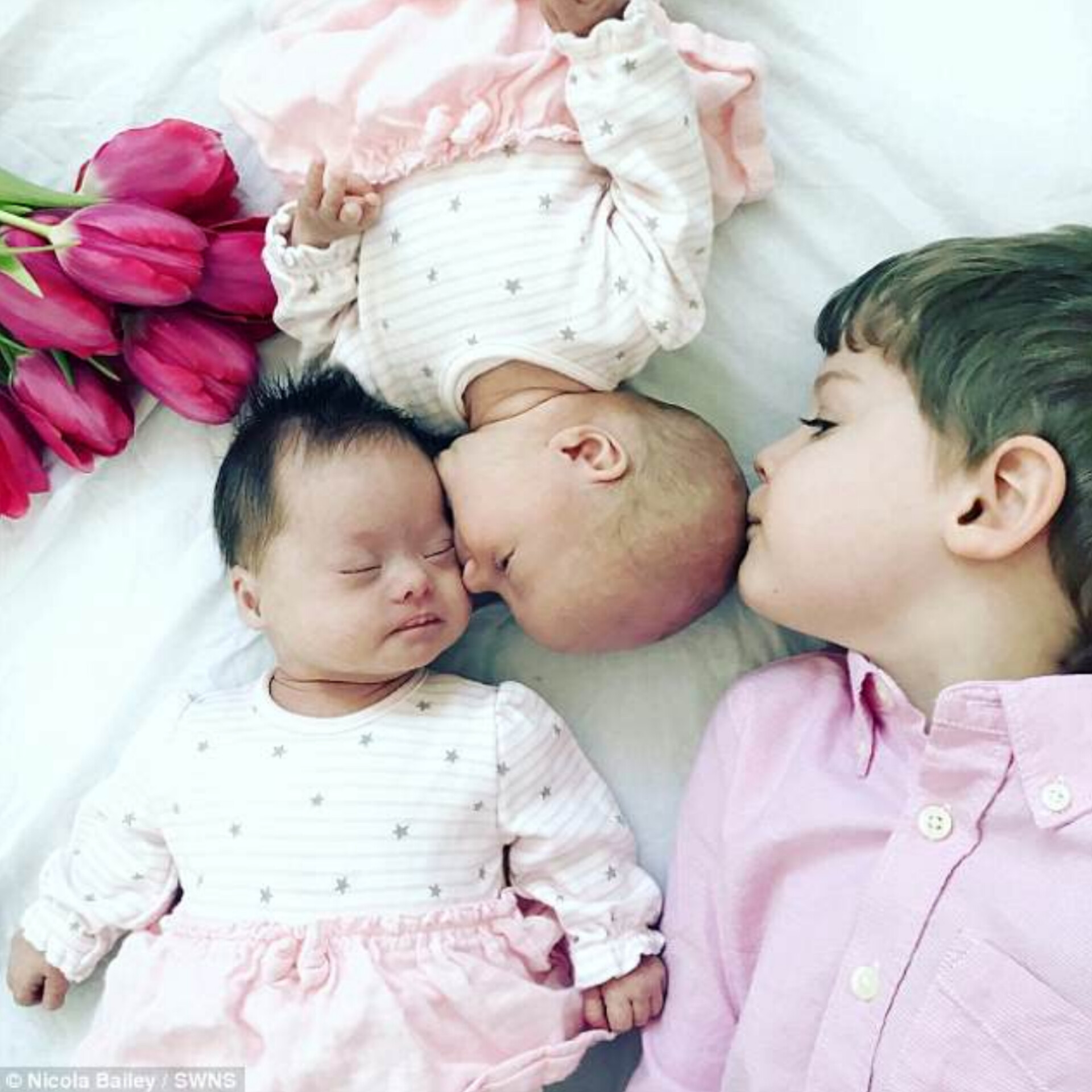
Her water broke at 32 weeks, but medication stopped the contractions and the children were finally born a week later at Rotherham Hospital on February 15.
Harper was born first, but Nicola didn’t even see her before she was rushed away for treatment, and Quinn was born 38 minutes later.
Nicola added: “Again, I caught a glimpse of Quinn across the room before she was taken to join her sister.”
Harper Jade was born at 8.02 am, weighing 5lbs 1oz and Quinn Mae was born at 8.40 am, weighing 4lbs 2oz.
Half an hour later, the doctors announced that they suspected she had Down’s syndrome and tests confirmed the diagnosis.
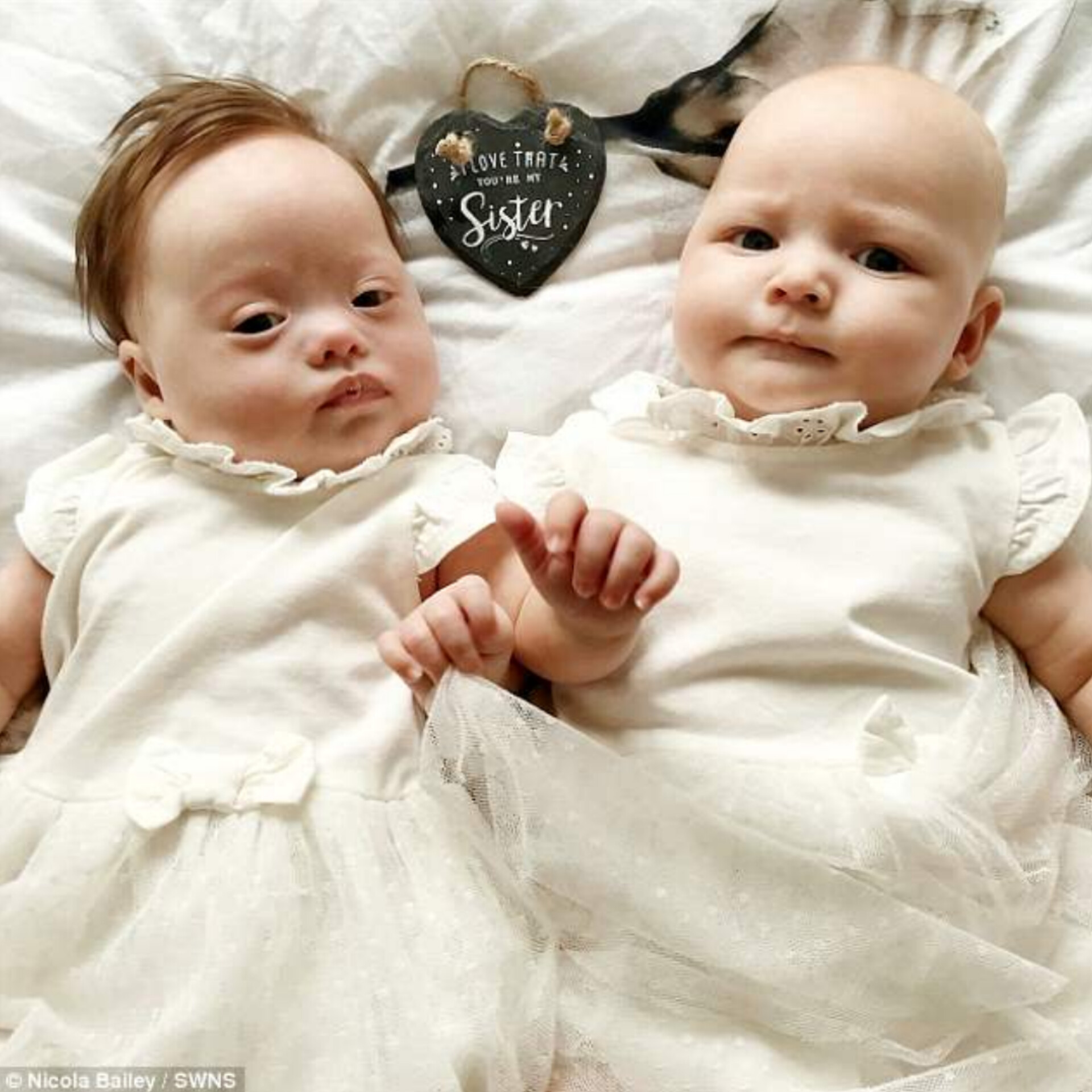
All I remember is the doctor saying ‘I’m sorry’,” says Nicola. But as soon as I saw the two of them, my heart melted. They were both so beautiful.
But I knew right away when I looked at Harper that she had Down’s syndrome.
Harper and Quinn received special care because of their prematurity, and the doctors discovered that Harper had a hole in her heart – which is common in children with Down syndrome – that will probably need to be operated on when she turns six.
I take part in twin baby discussion groups, but it’s hard to see other moms with twins, as I know the bond between my daughters and theirs will be very different,” Nicola said.
Harper still needs a lot of extra care. She only takes small amounts of food and we have to make sure she drinks every two hours.
But Quinn is jealous of her hair – she has a few blonde hairs while Harper has a gorgeous brunette mane that we can now tie into a topknot.
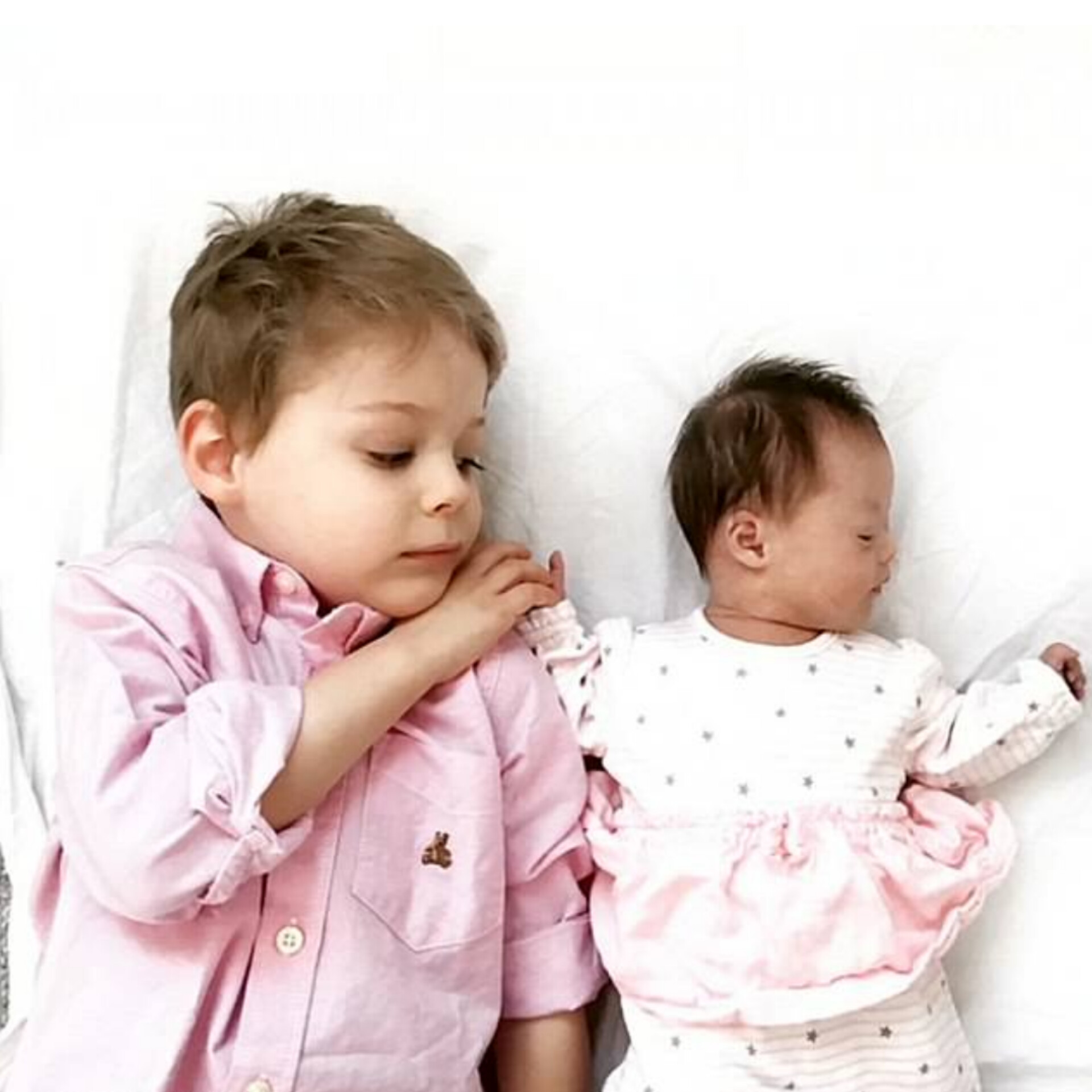
Harper found her smile early on and Quinn continues to be the couple’s diva.
But they both light up when in each other’s presence and look at each other more and more.
I like to dress them alike, and sometimes even coordinate my clothes. Although they’re not identical and Harper has Down’s syndrome, I can still see that the tips of their little noses and their lips are the same.
The bond they share as twins is like nothing else and I can’t wait to continue watching them grow.
Our family is unique and I wouldn’t change it for the world.
Around 40,000 people have Down’s syndrome in the UK and experts have stated that the likelihood of having a twin with the condition is one in a million.
Source: dailymail.co.uk

